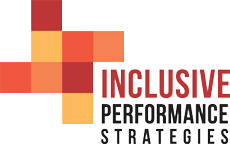03 Jun CEOs that get it
Inclusive growth isn’t just for impressing clients and keeping employees happy– it actually works. Here’s a look at 4 successful CEOs that have used inclusive programs with positive results:
- Brian M. Krzanich- CEO of Intel
“A fully diverse and inclusive workplace is fundamental to our ability to innovate and deliver business results.”
As a company in an industry historically composed of a white male population, Intel is ready to make a change. The company is currently composed of 76% male, 24% female employees. 57% of their workforce identifies as white, 29% identifies as Asian, and 14% all other races.
Most recently the CEO of Intel, Brian Krzanich, has announced aggressive diversity goals to be completed by 2020. The intent is to increase the number of women and underrepresented minorities in the work force. The company plans to spend $300 million – or more if needed – in order to reach their goal.
Learn more at: http://www.intel.com/content/www/us/en/company-overview/diversity-at-intel.html
- Larry Page – CEO of Google
“We believe our differences make us stronger, and produce better, more innovative work.”
Google has released statistics about their employee’s (“Googler’s”) demographics. They admit that they are not as diverse as they want to be, and this is something that they are looking to challenge.
Increasing the number of women Googlers is one of the greatest challenges for Google. As of January 2015, women occupy 30% of all positions. This number can be further broken down to 17% in tech jobs, 48% in non-tech jobs, and only 21% in leadership.
However, Google is making changes to try to change these numbers. Programs such as “Girls Who Code” aim to increase the number of girls involved in math and computer science in school, to prepare them for tech jobs in the future. Within Google there are various support groups for women within the industry.
Other various employee resource groups help build and support a wide range of communities. Examples of groups Google has are “Gayglers” for LGBTQ individuals and allies, and “Grayglers” for older employees.
Learn more at: http://www.google.com/diversity/at-google.html
- Randall Stephenson – CEO of AT&T
“A diverse workforce and inclusive culture are essential to AT&T. They allow us to attract and retain the best and the brightest to develop the most innovative products and solutions to meet our customers’ needs.”
AT&T has various initiatives, including hiring specific number of veterans and campaigning against LGBTQ discrimination. Randall Stephenson, the CEO, serves as a Chairman on the diversity board and is vocal about the need for inclusivity.
Examples of programs AT&T has include the following:
- LEAGUE – Group for LGBTQ individuals
- FACES – Filipino American Communications Employees
- OASIS — The Organization of Asian Indians
- oxyGEN – Cross-generational group
- Parents@Work – network for working parents
- AT&T Women of Finance
Learn more at: http://www.att.com/gen/corporate-citizenship?pid=17725
- Anjay Banga – President and CEO of MasterCard
“Diversity of culture, experience and thought all drive innovative thinking.”
MasterCard is fully devoted to maintaining an inclusive culture thanks to Anjay Banga, President and CEO. Mentoring programs, resource groups, and volunteer incentive programs help foster a spirit of inclusivity. Because MasterCard is a global company, they also have programs that apply to various regions of the world, not just the U.S.
Learn more at: http://www.mastercard.com/corporate/careers/diversity-inclusion.html
Additional Sources: http://www.diversityinc.com/the-diversityinc-top-50-companies-for-diversity-2014/


Sorry, the comment form is closed at this time.